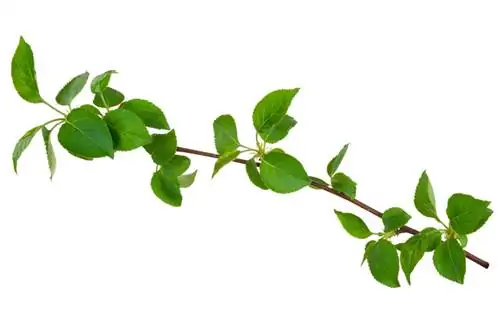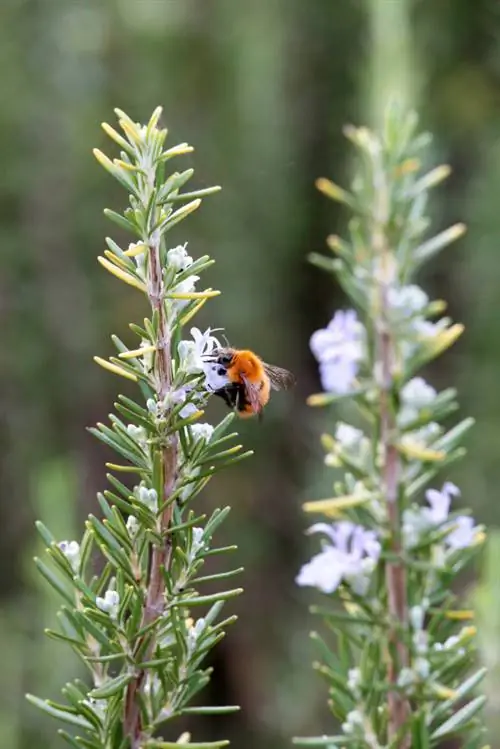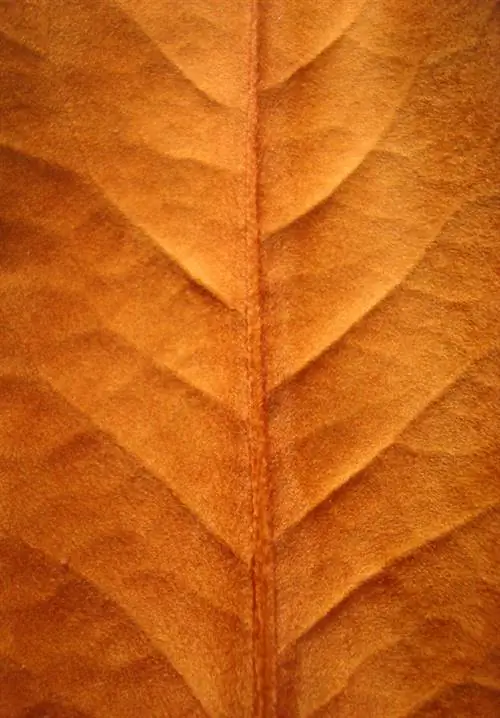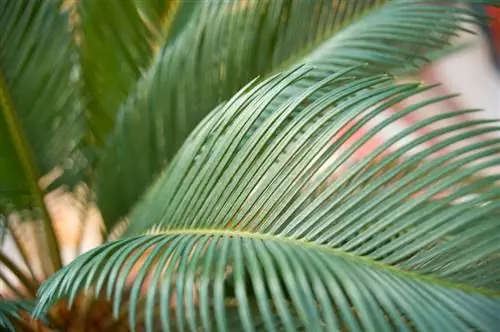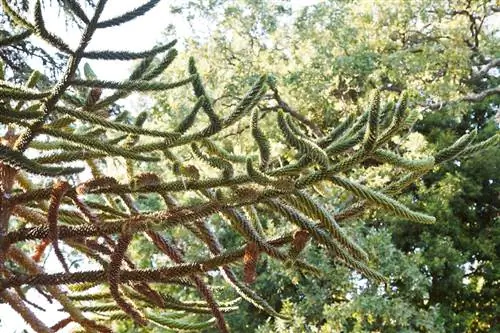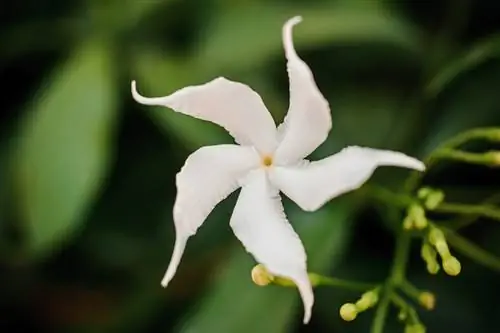- Author admin [email protected].
- Public 2023-12-16 16:46.
- Last modified 2025-01-23 11:20.
If a crabapple rigorously refuses to bloom, this devastating fact results from various causes. Take a look behind the scenes of the care program with us in order to track down the trigger and eliminate it.
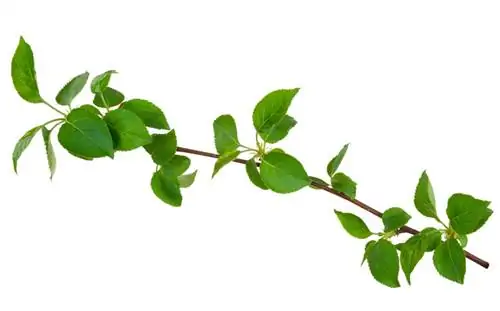
Why isn't my crabapple tree blooming?
If a crabapple doesn't bloom, the reasons can be incorrect pruning, frost damage, lack of water and nutrients, as well as diseases and pests. Adapted care, correct pruning and the selection of resistant varieties increase the chances of flowering next year.
Cause 1: Incorrect cut
The buds form on all crabapple varieties the previous year. If these are removed as part of pruning in late winter, this year's flowers will not bloom. It is better if you just thin out the wood and remove the water shoots. Branches that are too long should be shortened as little as possible or not at all.
Cause No. 2: Frost damage
If the ice saints still have bitter frost in their luggage in May, a single night of frost will cause devastating damage to the buds. Regardless of the robust winter hardiness of crabapples, we still recommend protecting the branches from delayed ground frosts. Cover the shrub or standard tree crown with a breathable fleece in the evening as soon as the meteorologists announce sub-zero temperatures.
Cause No. 3: Lack of water and nutrients
Crabapple is an incredibly thirsty and hungry tree. In order to create the lavish dress of flowers and leaves, followed by an abundance of fruit, water and nutrient requirements are at a high level. If there is a lack of supply, the crabapple will not bloom. How to fix the shortcoming:
- Keep the soil constantly slightly moist
- On hot summer days, especially in the pot, water in the morning and evening
- Administer a complete nutrient fertilizer in March/April
- Alternatively, fertilize every 4 weeks from March to August with compost (€10.00 on Amazon), horn shavings or bark humus
If you have identified negligence in care as the trigger for the failure to bloom, you have the best prospects of blooming at least next year if you optimize the care program from now on.
Cause 4: Diseases and Pests
Since crabapples are naturally more robust than cultivated apples, diseases and pests are secondary to neglected care as the cause of failure to bloom. If errors in cultivation can be ruled out, please look out for symptoms of powdery mildew, scab, aphids or caterpillars.
Tip
You will avoid the dreaded apple scab on crabapples if you choose one of the resistant varieties. The red-leaved beauty 'Coccinella' is one of them, as is the classic 'Evereste'. Among the dwarf varieties, the bonsai crabapple 'Pom Zai' has proven to be resilient.

